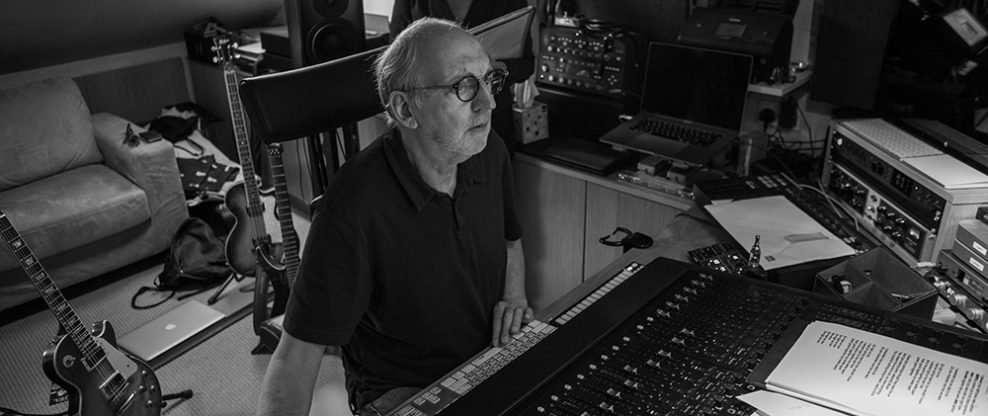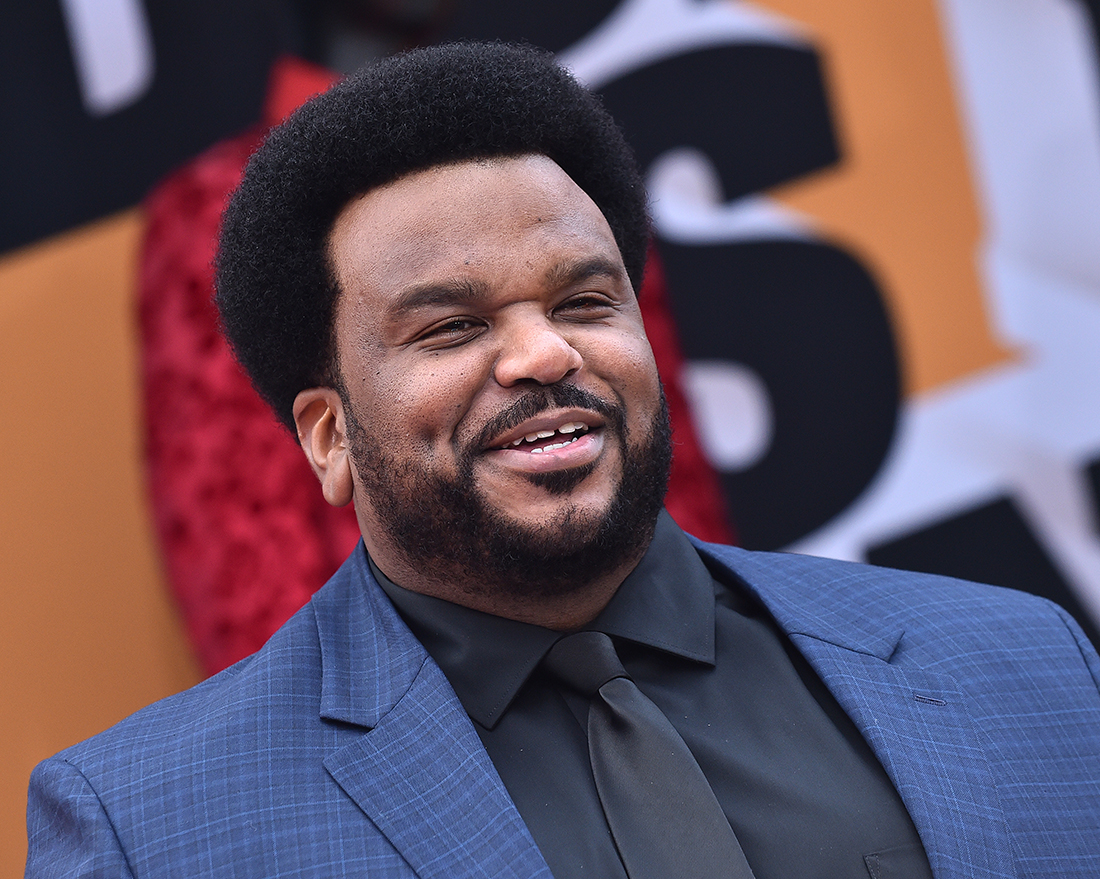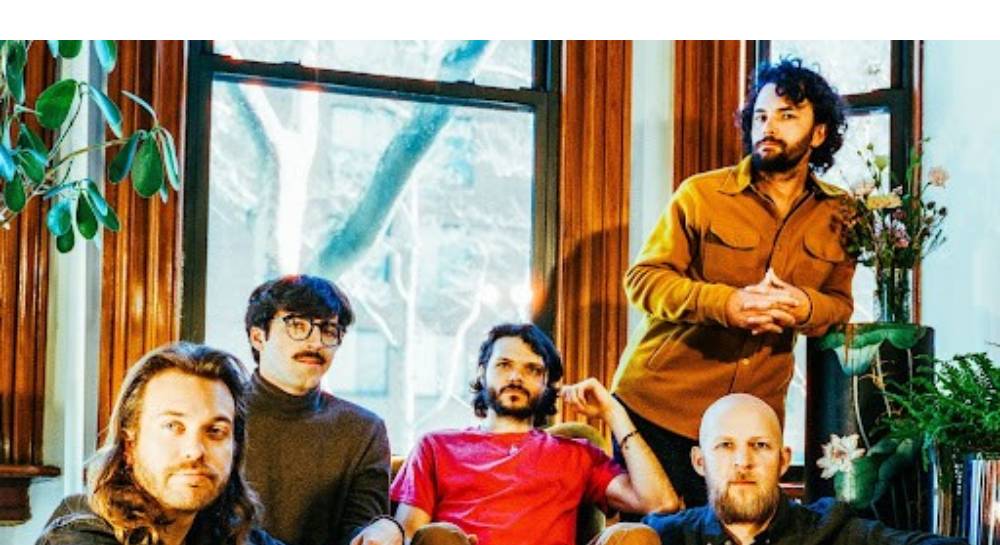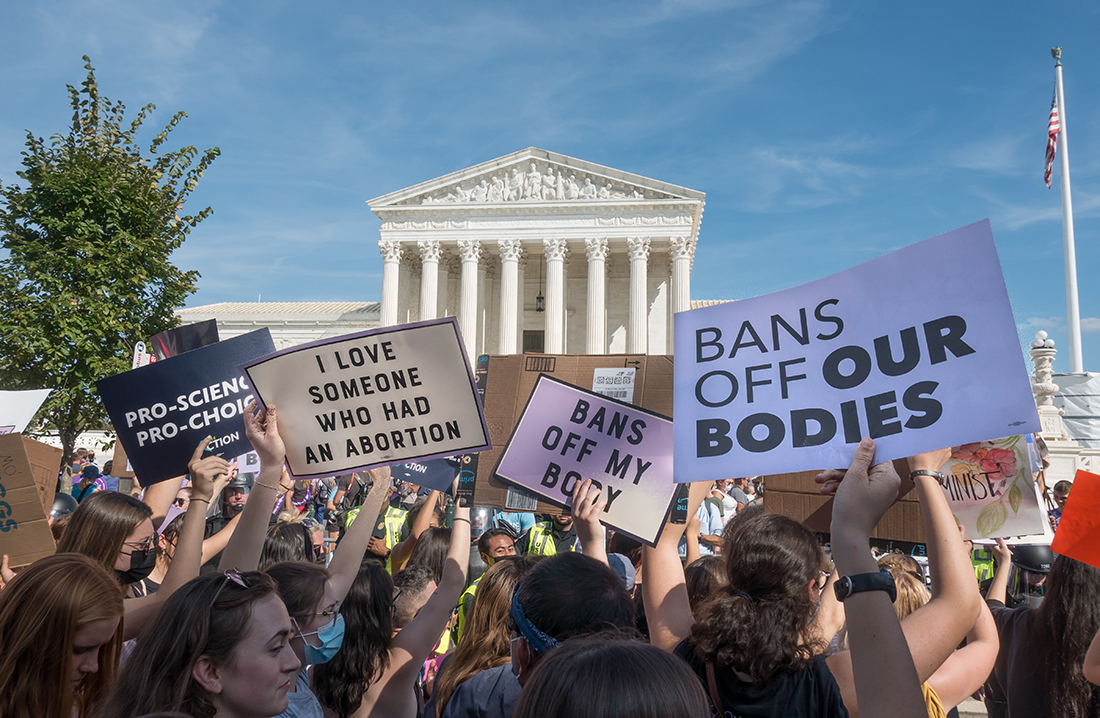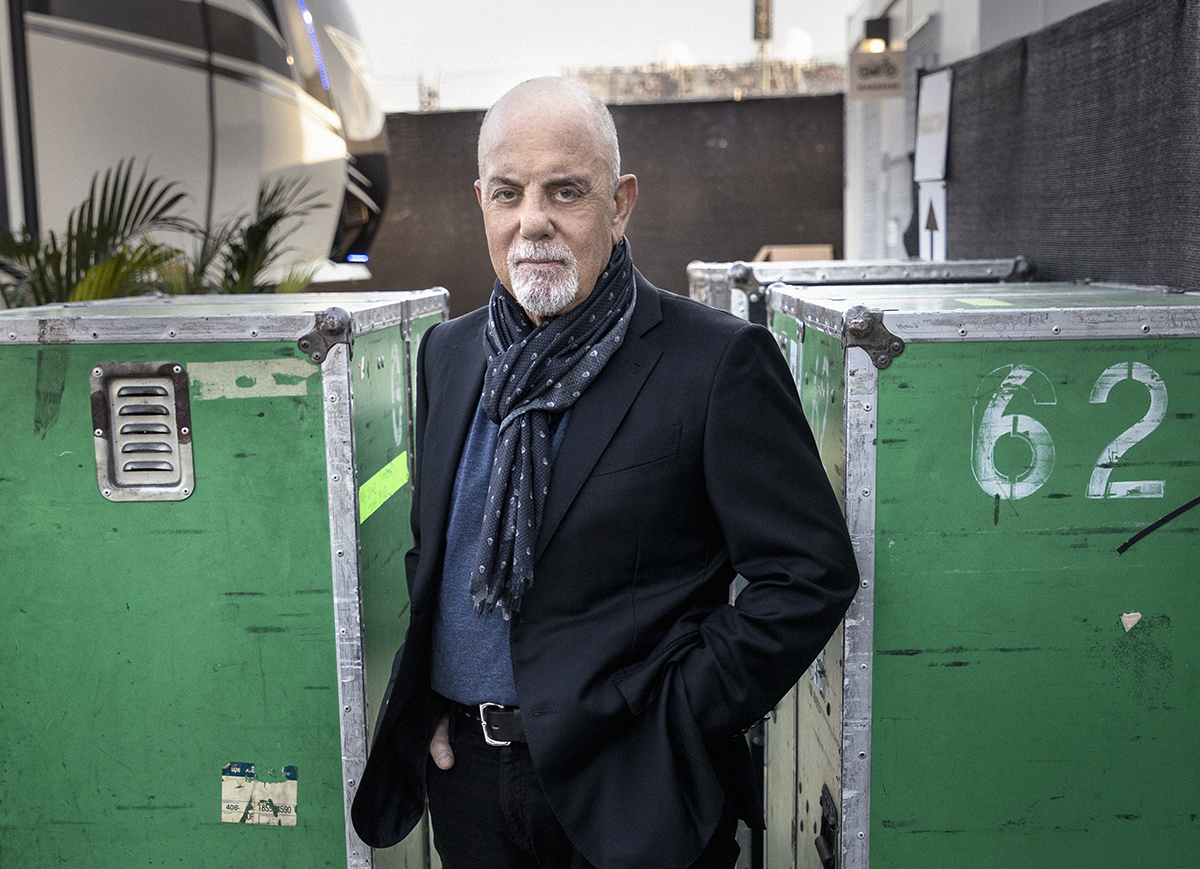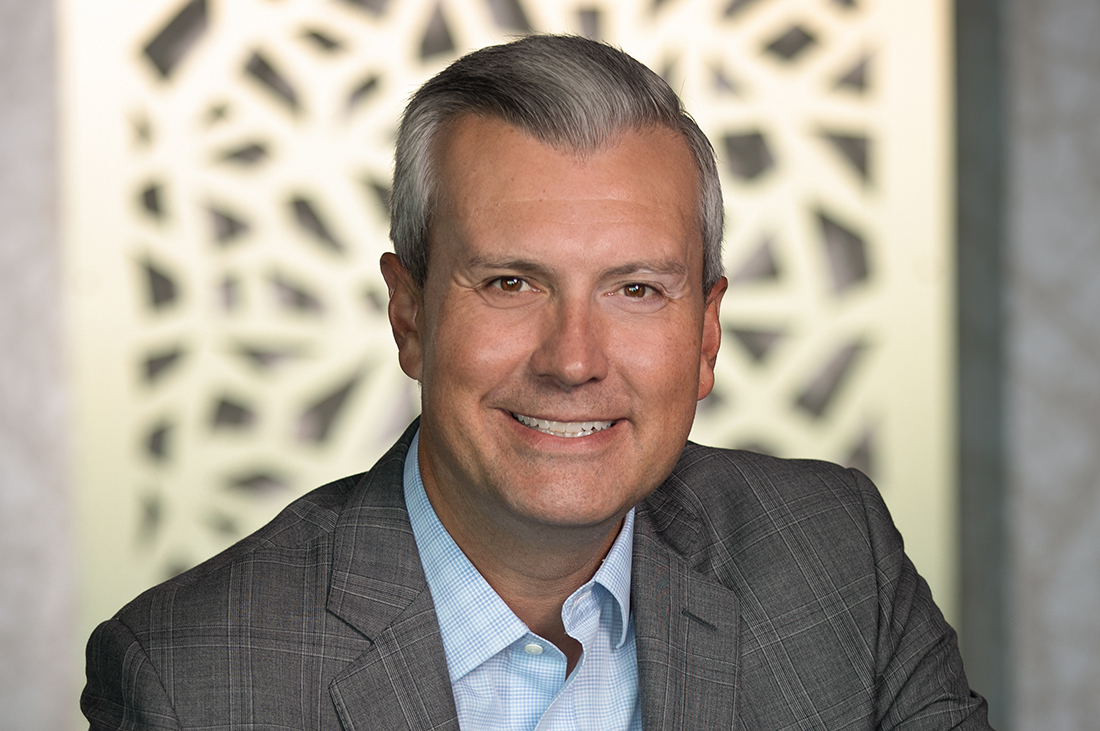This week In the Hot Seat with Larry LeBlanc: Producer, engineer, mixer, and musician Stephen Lipson.
Accepting on Zoom during the Grammy pre-show for “Best Song Written for Visual Media,” Billie Eilish thanked “No Time to Die” film personnel: Actor Daniel Craig; score composer, and producer Hans Zimmer; producer Barbara Broccoli; and Stephen Lipson for co-producing and co-mixing the track with her brother, and co-writer, Finneas O’Connell.
This marked the first time in Grammy history that the prize had been awarded to a song from a film still unreleased.
Eilish’s “No Time to Die” was released in Feb. 2020, while the 25th James Bond film was slated to open two months later. The film was then postponed twice. It is now scheduled to premiere in North America on Oct. 8th, a week after its UK release.
A hugely successful engineer, producer, musician, mixer, and programmer, London-based Lipson has helmed some of the most iconic electronic-laced musical productions of our time during a career of nearly 40 years.
Alongside producer Trevor Horn, Lipson was an integral part of ZTT Records in the ‘80s. Immersed at Horn’s Sarm West Studios as assistant producer, guitarist, and engineer (Horn’s right hand), he worked on classic recordings by Frankie Goes To Hollywood, Grace Jones, Propaganda, Sir Paul McCartney, and Simple Minds.
He has also worked in different capacities with Sir Elton John, Cher, Annie Lennox, Whitney Houston, Natalie Imbruglia, Sally Oldfield, Geri Halliwell, Joss Stone, Sophie B Hawkins, Will Young, Pet Shop Boys, Lindisfarne, Jeff Beck, Boyzone, Kelly Clarkson, the Rolling Stones, Ronan Keating, Zucchero, Jars of Clay, the Webb Sisters, S Club 7, and others.
Lipson also produced and mixed the soundtracks of “The Amazing Spider-Man 2,” “The Last Face,” “In the Heart of the Sea,” “Freeheld,” “Rush,” and “Inferno”; mixed the soundtracks of “The Dark Knight Rises,” “The Lego Batman Movie,” “The Little Prince, “Risen,” “Home,” “The Commuter,” “Mission Impossible – Fallout,” “The Girl in the Spiders Web,” and “Rumble”; produced the soundtrack of “King Arthur- Legend of the Sword”; co-produced and mixed “The Lion King – Movie,” and most recently mixed the soundtrack of “Boss Baby 2, “ and produced its single release.
Are things opening up a bit in the UK now with half of the population having had their first COVID-19 vaccine?
Yeah slowly. Just beginning to. I hope
Have you had your shot?
Yeah, I have had two.
In terms of working, how have you survived this past year?
Oh, brilliantly. I loved it. I am just in my (production) room working. It’s great. I couldn’t be happier.
Does a high-end music producer, engineer, or mixer need a spacious state-of-the-art studio today? Over the years, you have worked in studio complexes with 5 rooms. What really is production all about today? Nobody seems to have money for a lengthy record production.
I know. I am only too aware of it.
So what does recording process consist of within the studio today?
I ask myself that. As it happens, I have two studios which I know sounds a bit ridiculous. I have a room that I rent that is in a studio complex, and it is an amazing room that I have had for years.
Where is it?
It’s in a complex called Battery (The Assault & Battery complex) and I share the building with Alan Moulder and Flood (Mark Ellis). They own most of the building, and I have this room. Funny enough, it used to be Mutt Lange’s room. Another guy took it over, and he put these speakers in, and then I took the room on because the room sounds unbelievably good.
So I have had this room. I have had loads of different (studio) scenarios, big and small over the years, but this room was the climax of studios for me. It is just amazing. I was making records there. Everything was great. Around 10 years ago, Hans Zimmer asked me to mix a movie, and because of that I got into this movie world of producing and mixing scores.
After a Buggles’ show with you playing guitar, Hans told you that you and he should work together. Several months later, he called asking you to mix the Batman “The Dark Knight Rises” (2012) soundtrack. After that, you were well on your way to a film music career. Eventually, you put together a second production room at home.
Yeah, that’s right. It was for another movie. I can’t remember what the movie was. I was well into things by then. One night, I finished at my studio, and I delivered everything. I went home which is maybe 10 minutes away. I had a shower. Got into bed. Just about to fall asleep, and the phone rang. It was whoever it was saying “You need to redo something.” So I had to get dressed, get in the car, drive to the studio, and start everything up again. I wasn’t back in bed until four in the morning. So I came up with this idea of working on a (computer) laptop, and duplicating the equipment in a room at the top of the house here. Not a special room. Just something with the gear. So, if that phone call comes again, I can just walk upstairs, and kind of do what needs to be done. That was my idea. My thinking now (with the second studio) is that I stop at a reasonable time, and I have dinner.
Whatever you do as a producer, engineer, or as a mixer today can be done either in a large studio space with assistants or, with all of the technological advancements, can be done on your own with a few key pieces of equipment and working in a small space.
While SoundCloud and YouTube let users upload finished tracks, access to affordable recording equipment has made it easier for people to develop their own tracks. Editing music for film or for recordings is like playing Tetris. All about placing musical elements in the right places while following the storyline or the thread of the overall musical piece.
You are right about everything but one aspect which is, if I am mixing a film score in surround (using multiple audio channels from speakers that surround the listener), I need to have a surround set-up; and I need to know that what I am doing is going to translate really well to the sound stage.
The technological and logistical aspects of recording, editing, and mixing music today—particularly music in film–are mind-boggling. You seem comfortable running a project alone as you are being part of a team.
You can do everything anywhere, apart from that final mix. And, when it comes to the final mix, you need to know that you are delivering a good noise. So since putting a bit of gear in the room upstairs where I am now, it has become hyper state of the art. It is a very small room at the top of a terraced house in Hampstead. It is unbelievable up there. A surround system. The speakers sound brilliant. The equipment is equally state of the art. I have mixed loads of blockbuster movies up there on the top of my house in my dressing gown. It’s really weird.
An album itself is basically a collection of experiments in which the goal is often trying to create a great single?
Yes.
So you are moving music around in endless matchups in a room alone?
Making records up there is a walk in the park. It is really easy.
If you take on a film project, you may be working for three to six months?
Not me. Some for awhile. I’ve just finished “Boss Baby 2,” the new Boss Baby movie and that ended 7 weeks ago, and we started in July. It wasn’t consistent. I’m not the composer.
With your film work, your role may be either as producer, as an engineer, or as a mixer?
Hans always calls me an engineer. I am a bit bemused by that. I hate the whole thing of being an engineer. But whatever.
As a producer aren’t you in the position of auditioning for recording work?
You are talking about records now?
Yes.
I am not offered that many to be honest. And it doesn’t surprise me. I’m currently working with a Canadian artist, who is really good, who lives in Toronto. Poesy
Of course, I know about Poesy (aka Sarah Botelho) from Ancaster, Ontario. I recall her on ”The Launch,” a music competition series on CTV in Canada two years ago. Fergie and my friend, songwriter/producer Stephan Moccio, mentored her, and several others in order to record a song co-written and produced by Stephan. Poesy won the competition.
(After being discovered on the first season of the Canadian music competition TV show “The Launch,” Poesy signed a deal with Big Machine Records, and released her debut single Soldier of Love in 2018 which landed on the Billboard Top 40. Next, she released her 4-track “Glass Box Confessional” EP early last year. She has since released several singles including, “Strange Little Girl,” and “Diamonds.”)
She’s amazing. I think I’ve got four songs underway.
In working with Poesy or with other artists, you can–via the internet–fly in vocals or instrumental parts?
That’s what I’m doing with the internet. Poesy and I, we talk regularly. She will send me stuff and I will give my input. I tell her what I want, and then she and her partner do it. We work with the same system. So it is brilliant. It works really well.
It’s amazing today how many people work on developing a single.
Yeah, but everything has changed. I don’t think that a record producer is relevant now, really. It is sort of a dying thing. It’s writers.
You still need someone in charge saying, “We need to go here.”
Maybe, with bands. Today there are bands, and there are singers. They are two different things. Singers today are all produced by the writers. Probably 99% of them. And groups I don’t know. I am sort of allergic to them, I have to be honest. Working for groups doesn’t do it for me.
So many groups consist of one or two talented people—often the singer and the guitar player—and the other members sort of tag along as baggage.
That is a very optimistic viewpoint. I have a slightly different view which is that almost always there’s an asshole who’s got the talent, and then a bunch of useless players. Also, and this sounds terribly precious, but they are sort of messy. The whole thing. I stopped working with bands, and then I was offered the (American) Christian band Jars of Clay (leading to the LP “Much Afraid” in 1997), and I thought, “Well, they will be okay. They are born-again Christians.” That was the last band I worked with, I think.
What’s most impressive with your career is the wildly diverse list of artists you have worked with including Frankie Goes to Hollywood, Cher, Grace Jones, Annie Lennox, Pet Shop Boys, Lindisfarne, Propaganda, Paul McCartney, Jeff Beck, Boyzone, Kelly Clarkson, the Rolling Stones, Ronan Keating, Zucchero, the Webb Sisters, and even working on nearly all of S Club 7’s singles.
I’m not at all sure you would have had the same career experience if you had been based in the United States. Being centered in the UK, I’d argue provides a more diverse talent pool to work with. Perhaps it has to do with the adventurous character of the UK labels, particularly the independent label sector. America’s recording sector seems more rigid.
Well, maybe that’s determined or defined by the way radio stations have been
There are exceptions, notably Rick Rubin, but American rock, country, hip hop, and adult contemporary, and pop producers tend to stick to within the boundaries of their genres. Who else is there?
I don’t know. You are probably right, but when you talk about diversity I am just thinking about that. That’s a weird one. I don’t know what to say about that because I’ve worked as the opportunities have arisen.
Has a lot of your work developed from word of mouth rather than having a manager?
Not very much came through management, ever. I was thinking the other day how interesting it is when I look at the artists that I have worked with most of them—not all—but quite a lot I have kept working with. I only did three Annie Lennox albums, but there are some artists that I have done 6 albums with like Ronan Keating.
Ronan Keating, the former Boyzone co-lead, and that issue of diversity.
But he’s so lovely. I would never not work with him.
Again, your roster is diverse.
Yeah, maybe.
Is it different working with women vocalists? You have worked with some really strong ladies like Grace Jones, Annie Lennox, Cher, Sally Oldfield, the Webb Sisters, Geri Halliwell, Ruth Lorenzo, Joss Stone, Sophie B Hawkins, Amy Studt, Emma Holland, and Jordin Sparks.
Oh, that is interesting. I love working with women. I have the deepest respect. They are the strongest sex, and they are deeper and brighter. Men are coarse. If I had to make a choice it would be women every time, and I have worked with some pretty heavy-weight women. Just brilliant. They are all amazing.
Is it easier to work with recordings than films since you are dealing with tracks already recorded?
It doesn’t make any difference to me. What happens is that the composer, whoever that might well be, provides what you could call a demo, but is basically the cue without the orchestra. And I will have that, and be fiddling around with that, and then, over the course of time, they will have a scoring session with the orchestra; and while they are recording it, they will send it to me in piecemeal, bit by bit. The first string parts, the second, the brass, the woodwinds, the horns, whatever, and I put it all together. So it doesn’t make any difference.
If sections are changed, re-shaped, or shifted, are you able to easily change what you have on your end?
I’m one of the few people who will do that. Either me or the composer or the music editor. The whole thing is a really big deal.
Billie Eilish made Grammy Awards history by winning the visual media prize for a film that is yet to be released. Billie and her brother and co-writer Finneas O’Connell won the Grammy Award for Best Song Written for Visual Media for their James Bond track “No Time to Die,” marking the first time in Grammy history the prize has been awarded to a song from a film that has not yet been released.
(“No Time to Die,” from the film of the same name, was released in February 2020 when the spy movie, starring Daniel Craig, was scheduled to open in April. The film was then postponed to November, then again to April 2021, and is now scheduled to hit cinemas on October 8th, a week after its UK release.
Traditionally, the song wouldn’t have been considered eligible for the category, but the qualification rules were modified this year due to the Covid-19 pandemic.)
How did you become involved with this project, and what specifically was your role?
Hans called me, and said—Have you ever spoken to Hans? He’s got a funny way of putting things–so he called me, and his opening line was, “Do you like Aston-Martins?” or something like that. Some kind of cryptic line. I was like, “Yeah, what about them?” He said, “We are doing the Bond film. I’ve been asked to do the Bond score. Would you produce the single?” I didn’t know what the single was.
Nobody would know at that point. For a Bond film. there are usually hundreds of submissions.
Well, they certainly got a few. If you are a writer and if you are into Bond, you would send something, wouldn’t you?
I understand that despite Billie, and her brother and co-writer Finneas O’Connell being at AIR Studios with a 70-piece orchestra along with producer Barbara Broccoli, director Cary Joji Fukunaga, and Hans and you, the pair didn’t know if their song was being used or not. Not until later when it was announced that it was going to be their song.
They had a demo that sort of sounded like the finished record, but without the Bond-ness if you know what I mean.
Like the Smiths’ guitarist Johnny Marr providing Bond’s famous final guitar chord, along with some other electronic tricks?
Well Johnny, and the orchestra, and the build. Actually, I think that I did a big edit on it. It was a lot longer than their demo. Anyways Hans played me the demo, and on the first listen—and I am terrible on first listens with things. I readily admit it–It sounded okay. I wasn’t jumping up and down saying, “This is the best thing I’ve ever heard.” I thought, “This sounds good. Okay.” Hans said, “Well, I think that this could be really good.” Barbara Broccoli and others, Hans said, “Aren’t sure about it. It doesn’t have the dimension that they are looking for.” So I suppose that he was looking for an opinion from me. My opinion was two-fold. Firstly, the dynamics you can put in. I knew it could be done. And secondly, the fact that it was Billie Eilish for me eclipsed the song. Billie Eilish, I thought doing the Bond song was a no-brainer A complete no-brainer.
Bringing in Billie Eilish was a brave move. It was an unexpected move because Billie and Finneas are outsiders to the Bond aesthetic. Their sound is distinctive. It is certainly not as bombastic as the celebrated Bond opening tracks like “Goldeneye” (Tina Turner). “A View to Kill” (Duran Duran), “Thunderball” (Tom Jones), “Live and Let Die” (Paul McCartney and Wings), or “Goldfinger” (Shirley Bassey). The tension in their songs mostly comes from what isn’t there, along with Billie’s performance. Okay, outsiders. Would you pick them? Well, yeah.
It just struck me as a brilliant connection. She’d introduce a whole new audience to Bond. I can’t even imagine that her fans know what Bond is.
(Also Finneas O’Connell acted as de facto editor on the orchestration provided by Hans Zimmer, and co-arranger Matt Dunkley. There was one orchestration by Dunkley, another by Zimmer, and then there was the merging of Dunkley and Zimmer’s orchestrations. In the end, it was O’Connell going, ‘Okay, this bit goes here. Chuck this bit.” As co-producer on the track, as well as the tune’s co-mixer, Lipson is credited by Zimmer for recognizing whose voice should really be heard in the studio. He said, “Everybody just shut up, and everybody just listen to Billie.” Lipson realized Eilish and O’Connell both knew what the song was about as did Marr. Don’t ruin it by putting a lot of other crap around it.)
And then there’s actor Daniel Craig who had planned to walk away from Bond after “Spectre” (2015), citing numerous injuries he’d sustained in the role. But he was convinced to do one further movie. Being his fifth and final Bond film he’d be really interested in how the track turned out.
Oh, my God. He was the last person to be convinced.
Really?
Oh, big time, yeah. There was a whole thing that happened with him, and rightly so because it’s his last movie.
Daniel Craig and Sean Connery, the best James Bonds?
I just buy them all. I have to be honest.
Bond film music openers are part of our DNA.
To me, they are. This sounds like a weird thing to say but they are like ballet. You know when those films start that there’s always some mega thing that happens. It’s like ballet, but not dancing. Whatever is happening. And they have always bought me for an hour or so. I’m in.
While then concurrently working on “Top Gun: Maverick,” “Wonder Woman 1984,” and “Dune,” Hans was said to have a hesitancy about replacing original composer Dan Romer, just months ahead of the film’s original release date. He told Barbara Broccoli he could only turn the score around if he could do it with frequent collaborator Steve Mazzaro, and she agreed
I don’t know if he had a hesitancy.
I think it was because of “No Time to Die,” being the latest release of such an iconic film franchise. The jewel of the crown. Don’t mess it up.
He’s done that a few times. He did that with “Superman with “Man of Steel” (2013). I don’t know if I could say the same about “Spiderman.” (The Amazing Spider-Man 2”). But I worked on the “Superman” score with him, and I know that he felt that he had big boots to fill (because of John Williams).
To completely distinguish “Man of Steel” from the previous films, the iconic “Superman March” by John Williams is not heard. While apparently popular with Superman fans, film critics cited the score as being repetitive, simplistic, and too reliant on drums.
(For the 2014 superhero film “The Amazing Spider-Man 2” (2015) Hans Zimmer collaborated with a handful of other musicians in a group labeled called The Magnificent Six, consisting of Pharrell Williams, Mike Einziger, Junkie XL, Johnny Marr, Andrew Kawczynski and Steve Mazzaro.)
You have spoken of Hans’ attention to studio production You have described working with him as “a constant eye-opening experience.” You have watched him work for weeks on two notes; on a single synth sound for days. You’ve witnessed him suggesting moving a cue to watch the scene make so much more sense.
Over the years Hans has shown amazing faith in you, setting you tasks that were frequently out of your comfort zone. Accepting that it was a significant learning experience moving from record production into the film world, did you pick up any of Hans’ working habits?
What have I learned from doing film work?
Yes.
The biggest thing that I have learned is…I have always been incredibly passionate about whatever I do. Whether it is something that has loads of cred or nonsense pop. I’ve thrown myself into it. It’s like a life thing you know. What Hans has taught me; he’s shown me that one has to have the ability to go dispassionate and let go. Often, he will spend weeks on a piece of music. A director might hear it, and might say, “The scene has been cut” or “This is the wrong angle.” So Hans will go, “Okay, we will start again.” Without blinking, he will go dispassionate about the thing that he has been passionate about for weeks. It is an amazing, amazing attribute.
Bottom line the client is always right. Most certainly, if the client is respected.
Yeah.
A critic once wrote that he could always recognize a Hans Zimmer score because of their sameness. I don’t think his soundtracks sound at all alike. Each one has a very different approach, and each uses different styles and sounds. I didn’t know what he was talking about.
Nor me. That’s complete nonsense. Total nonsense. There was a guy that I worked with, and he said, “I hate Han’s scores. They all sound the same.” I was just aghast. He is just a guy who tries his hardest, basically.
Traditionally, within the British studio system, producers and engineers started off as assistant engineers–even as tea boys–before moving up the ladder to become full engineers and, perhaps, eventually move to the producer’s chair.
Sure. I get it. That never happened to me. I didn’t have any training. I don’t know if that is good or bad.
You became an engineer largely because you weren’t a great guitar player. Someone had to mix what your band was recording. So you were self-taught.
Yeah. It was stupid why I became an engineer. It was because I was working doing sessions. I’d say, “My guitar always sounds diabolical.” I was blaming the engineer for my shortcomings. At the time I didn’t know. So I went through this whole circuitous route to discover the problem was nothing to do with an engineer. It was the way that I played. By then, I was suckered. I was in (as an engineer).
When you were starting out as an engineer was there anyone you emulated or thought, “That is where I want to be someday?”
No.
Later on?
Yeah. I looked at the people that you’ve interviewed, and one of them is Todd Rundgren. He is my Desert Island artist. if there is such an expression. A friend of mine used to work in a studio in Fulham, and when I was 24 or 25 and he called me one day, and he said, “If you are interested, Todd Rundgren is in. Do you want to come and meet him?” I was miles away. On the other side of London, I said, “I’m coming now.” Got in the car, drove to Fulham where he was, and walked in nonchantly, pretending to be extremely cool. He was behind the console leaning against the back wall with his feet on the desk. You remember he had mutli-colored hair? Well, I walked in and saw him. I think it was exactly the same look as the album cover “Todd” (1974), and I couldn’t talk. I had to leave the room.
What was he working on?
I have no idea. I couldn’t stay in the room. It was all too much for me.
You built your first studio in the mid ’70s with practically no knowledge or help. Then you started engineering, making it up as you went along. Your only previous experience was recording in your bedroom with a few friends?
When I was much younger, in what I would call my bedroom band (Tractorial Base), there was the three of us playing music in a bedroom. I didn’t know the word producing, but that was what I was doing then. When I was 16. It just felt like the thing to do. “Why don’t we try this? Let’s do this.” I wasn’t he best player in the room, but I was the guy suggesting a way of moving forward; suggesting a way of finishing something.
Working in two-track?
Yeah. On a Revox A77 (an open reel tape recorder). So engineering was never part of the equation at all. It was always about making the record really.
Your early days involved a lot of learning on the job. By 1976, you had created a studio, Regents Park Recording Company with Duncan Bruce.
I was a 50/50 partner in that. I was doing sessions for Duncan Bruce. He had a jingles company called Don Quixote. We got a friend of mine in to sell studio time, and it was unbelievably successful. It was working 24 hours a day. After the studio had been going for a few months, Dave Robinson (from Stiff Records) wanted to record an album there and suggested that he get an engineer in for the first day. That was Phil Brown who, in the space of 12 hours, got the project underway and taught me some invaluable lessons.
You oversaw the Sniff ‘n’ the Tears’ album “Fickle Heart” with the single “Driver’s Seat” which reached #15 on the Billboard Hot 100 in 1979.
It happened and I had no idea that it was such a big deal. I was just working. Also, I thought that is what happened. You did something, and you did okay. It meant nothing at the time.
The band fractured almost immediately after the album’s release, and disagreement with the studio over credits and royalties led to you leaving and becoming a freelance engineer.
I ended up not getting a producer credit for “Fickle Heart,” just a payment, even though they acknowledged me as being one of the producers. Hence doing the second album, “The Game’s Up,” as sole producer (with a new band lineup)
(In 1992, “Driver’s Seat” topped the Dutch charts after being used in an ad campaign. Five years later “Driver’s Seat” was featured in the film “Boogie Nights.” The track has been sampled repeatedly by artists over the years.)
Among the artists recording at the Regents Park Recording Company then were Eddie And The Hot Rods, Tracey Ullman, Dave Stewart, Sally Oldfield, Kirsty MacColl, Mike Heron, Johnny Moped, Classix Nouveaux, and even the Sex Pistols.
Did they? That’s funny.
As the ’70s rock scene exploded in the UK, a new breed of entrepreneur who knew and understood the new music realized that instead of simply giving artists to a large record company, they could record the artists themselves for their own labels which led to independent labels like Stiff, Chiswick, Beggars Banquet Records, Rough Trade, Factory, Mute 4AD, and ZTT emerging.
Sniff ‘n’ the Tears nor Frankie Goes To Hollywood would never have been signed at a major UK label.
No, no. Of course not. That’s for sure.
You were fortunate to be in the midst of this revamping of British music pushed on by a demand to develop great singles.
Years ago, I made a record, “A Secret Wish,” with a group called Propaganda. It sort of became a cult record.
By the time Buggles/Yes producer Trevor Horn phoned, you had moved away from engineering. You were s finding projects to produce. Productions for which you received very little money, but you preferred it to engineering. You came to work with Trevor for three days, but you stayed 6 years.
Propaganda’s “A Secret Wish” is a stunning piece of work with the singles “Duel” and “Dr. Mabuse,” both becoming Top 30 UK chart hits. Trevor was working on other projects, so you were very much left to your own devices, working in a back room at Sarm West Studios.
This German synthpop band may have been first group to sign to Trevor’s record label/art pop collective, ZTT, along with Frankie Goes To Hollywood, and the in-house band, Art of Noise.
Propaganda, they could well have been the first band signed there. I’m not really sure. The recordings happened in two batches, Trevor doing “Dr Mabuse” and then me doing the album with a gap in between. I’m still friendly with the two girls (Claudia Brücken and Susanne Freytag). Over the past three years, they’ve kept popping over here working in the house, and we’ve put a record together. They sit in the back of this little room. Sing whenever they need to sing. I fiddle around with the equipment. It’s brilliant. I love it.
You were the guitar player on Frankie Goes To Hollywood’s “Relax/ “Ferry Across The Mersey.” Afterward, from being hired as an engineer, you starting doing everything that you wanted to do there, playing and producing.
Well, that was the first thing we did. The version of “Relax “(version #4) that was released had me playing guitar, and “Ferry Across The Mersey” was the B-side.
Trevor didn’t consider Frankie Goes To Hollywood to be worthy musicians. With the exception of Holly Johnson and Paul Rutherford, the rest of the band didn’t play on much of “Welcome to the Pleasuredome.” You oversaw the follow-up, the second and final studio album “Liverpool,” recorded — for tax reasons — at Wisseloord Studios in Holland, and released in late 1986.
The first record they didn’t play on the main songs. But whatever. They were fine. I enjoyed working with them.
Trevor deserves credit for the work he’s done over the years including producing Yes, ABC, the Buggles, Frankie Goes to Hollywood, Paul McCartney, Robbie Williams, Tom Jones, Grace Jones, Seal, Tina Turner, the Pet Shop Boys, and Simple Minds. Often overlooked in his story is the impact that his late wife Jill Sinclair made in the success of his career as well as the Sarm studios, Perfect Songs publishing, and ZTT Records.
That’s for sure. But funny enough I always thought that Jill was a facilitator. He used to say, “Why don’t we do this?” and she would make it happen.
She made sure the clocks ran on time.
Big time.
You have some great production stories. One of which was assisting Chris Kimsey for three months on a Rolling Stones’ album he was producing at Pathé-Marconi Studios in Paris which ended up being “Undercover” (1983). At the time Mick Jagger and Keith Richards weren’t getting on. Sessions never started before midnight, and never finished before 8 A.M. If someone turned up after midnight one night, everyone else would turn up even later the following night, so sometimes you didn’t get started before maybe 3 A.M.
Meanwhile, tape was running continually, and part of your job was to log everything being played. They could end up using up to 16 reels of tape a night?
Yes, it was 8 hours each night and 16 reels of tape.
Were you working as an engineer?
Chris didn’t need an engineer. He needed help.
Due to the abundance of tape being used?
Yeah, that was the big deal. Logging what they did. Whatever that was. It wasn’t unenjoyable. It was just weird. Really weird.
(For the Pathé-Marconi Studios sessions, band members set up in a semi-circle with Mick Jagger facing the rest of the band like a conductor. Ronnie Wood on the left, then Charlie Watts, then Bill Wyman, and then Keith Richards. There was a P.A. system set up primarily for Mick Jagger, and the kick drum.)
So much tape to chronicle.
Well, it depended on how you looked at it. Either so much or nothing. I veered more toward the nothing, but there was an awful lot of it.
It often happens in recording that one member turns up at the studio when the others aren’t there, and wipes out a part, and re-records a new part.
You are talking about songs. Like there’s something there. There was nothing there.
An engineer has an undefined role in the creative process. He’s in the control room largely to do what the producer tells him to. Some producers never want any input from those they are working with. There’s the story you tell of engineering “Snakes and Ladders” (1980) at Air Montserrat for Gerry Rafferty. While recording a track, guitarist Richard Brunton asked you what you thought might improve things. You suggested that he play a couple of inversions higher on his guitar, and that “it would sound amazing” He agreed. Gerry heard and tore a strip off you.
That wasn’t funny at all. That was tragic. I told Richard that he was playing in the wrong part. “You need to go up an inversion, and then you will be out of the way of the keyboard.” And he said, “That’s great. I will do that.” And Gerry Rafferty overheard us, and he looked at me, and he said, “You just stick to the engineering.” In a very cutting way, he said it. It was awful. Absolutely awful. It made me realize that you should actually listen to everyone. Not agreeing necessarily, but always listen.
Did you get that kind of attitude while you were still an unknown, and climbing the ropes as an engineer?
No, it’s always been the opposite. If you are producing a record, why wouldn’t you listen to what someone had to say? Have you so little confidence that you can’t cope with it? It’s just a weird thing.
In the mid-90s, you were asked whether you’d like to produce Elton John. Obviously, you would like to. So you were flown to Orlando, Florida where he was performing. You met Elton in his dressing room before the gig. He told you that he wanted to use his current touring band to make the album and would write songs for it. He asked, “What do you think I should do?” You told him you’d love to make a follow-up to “Captain Fantastic and the Brown Dirt Cowboy (1974) with a stripped-down band. After you left the dressing room, you saw his show and returned to London.
You never heard from Elton.
Instead, Elton released “Made in England” (1995) which he co-produced with Greg Penny.
In 2006, Elton released “The Captain & the Kid,” picking up where “Captain Fantastic and the Brown Dirt Cowboy” had left off.
You and Pharrell Williams co-produced 5 of the songs in the recent “Lion King” movie including mixing Elton’s “Never Too Late,” which he co-wrote with Tim Rice heard during the film’s end credits. Awkward after that earlier meeting?
When we saw each other again, I said, “You probably don’t remember that we have met before.” He said, “I remember everything about the meeting.” He didn’t go any further than that. But, anyway. he remembered. I think with the album he did that he did everything I had suggested.
How hands-on was Paul McCartney when you co-produced tracks on “Flowers In The Dirt” (1989) like “Rough Ride” and “Ou est le Soleil?” (co-produced with Paul and Trevor Horn), and “Figure of Eight,” and “How Many People.”
Very. He was completely brilliant. Beyond words brilliant.
Much of Paul’s most adventurous work has either been done in secret or has been held back for a variety of reasons, both legal and commercial. He’s far more innovative than most people might imagine.
For sure. It’s a funny comparison, but I compare him to Prince. The way in which he can just do it (create) subconsciously. Just instinct. He had ideas just endlessly. He was remarkable. Totally.
Is it daunting working with someone like Paul McCartney? Did you have any hesitancy about putting forth your own ideas or critiquing his?
No.
Some people have difficulty collaborating with people they consider icons.
I can’t see the point really of anyone being like that. It doesn’t stack up. What? They aren’t going to listen? The worst they can say is, “Mind your own business.” I had a moment with him, but it passed quickly.
There’s a comfort of working with A+ people who interact with you. With egos in check, there are no bruised feelings.
That’s because those people have confidence. Generally. And I don’t know what gives you confidence. Maybe, it’s time, experience, success. I don’t know. But I think that people who are really good, generally have the confidence to listen.
Larry LeBlanc is widely recognized as one of the leading music industry journalists in the world. Before joining CelebrityAccess in 2008 as senior editor, he was the Canadian bureau chief of Billboard from 1991-2007 and Canadian editor of Record World from 1970-80. He was also a co-founder of the late Canadian music trade, The Record.
He has been quoted on music industry issues in hundreds of publications including Time, Forbes, and the London Times. He is a co-author of the book “Music From Far And Wide,” and a Lifetime Member of the Songwriters Hall of Fame.
He is the recipient of the 2013 Walt Grealis Special Achievement Award, recognizing individuals who have made an impact on the Canadian music industry.

